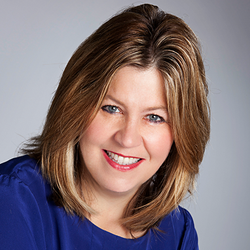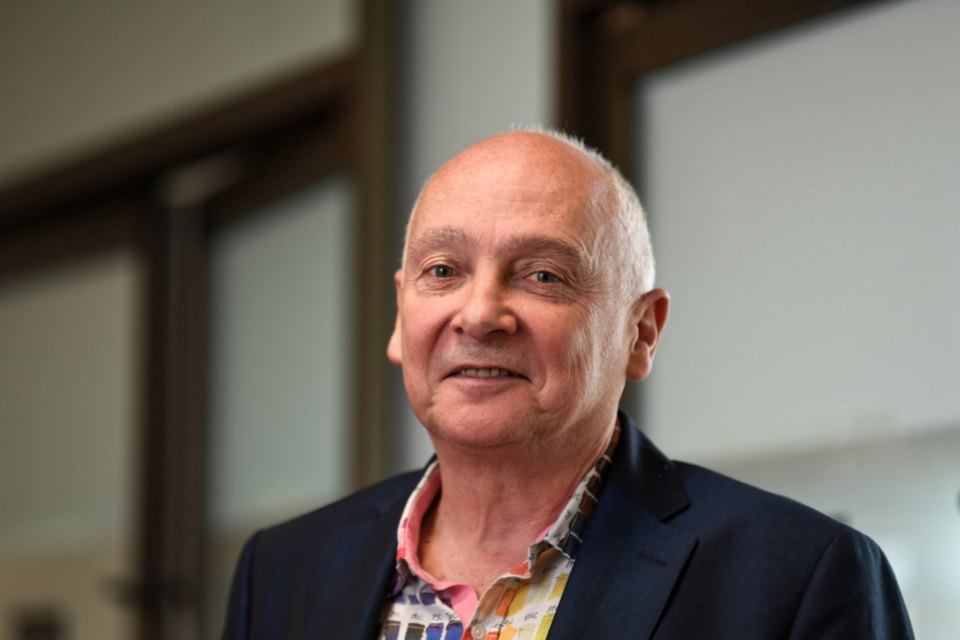Part II: Fundraising trends you’ve got to know about to survive tough times

By Matthew Schulz, journalist, Our Community
In a tough fundraising environment, we asked the experts what not-for-profit and community leaders can do to keep funds flowing during tough times.
In short, they suggested:
- Know your ground – keep up with the latest studies
- Cultivate your greatest supporters, because giving is down overall
- Borrow the best ideas you see in the sector and get creative with campaigns and collaboration
- Embrace digital fundraising tools (more than you do already)
- Brush up on your grantseeking and other fund-finding skills
- Support campaigns to slash fundraising red tape
- Arm yourself with the best free and affordable resources available.
Our Community’s Institute of Community Directors can help you with all these tasks, and in part two of this special series, we take an in-depth look at the final four points. Click here to read part one.
Embrace the tools of digital fundraising
Not-for-profits that had already adopted technology platforms for their work were well positioned to react when lockdowns hit. Whether working from home, hosting AGMs online or employing cashless payments, some groups already had the tools required, while others were forced to adapt quickly.
Studies such as Our Community’s Covid-19 Community Sector Impact Survey highlighted the fact that most groups were forced to scale back or abandon in-person fundraisers.
That same report pointed to the benefits of technology for NFPs seeking to adapt to the current environment, with nearly two thirds intent on new tech investments in the coming year. Many will be seeking to find new ways to remotely connect and conduct fundraisers.
The Big Rethink dedicates a chapter to building digital capacity, which means more than having a digital fundraising platform, and includes websites, social platforms, emails, better search results, content creation, digital marketing, data tracking and integration.
It suggests any digital upgrade must be considered as part of overall capability across staff, volunteers, infrastructure and analytics, and outlines digital opportunities such as migrating fundraisers online and getting involved in mainly digital campaigns such as Giving Tuesday.
Leading not-for-profit technology support organisation Infoxchange has tracked the needs of the sector in ramping up its tech savvy with its report Digital Technology in the NFP Sector. That found that while 97% of not-for-profits were disrupted by the pandemic, only 30% had the right technology needed to make the transition.
It also revealed that just 43% of NFPs collect donations on their website, and 32% use an external fundraising platform.

Partly in response to those findings, it has pulled together guides, training, software discounts and expert help into a single Digital Transformation Hub, which aims to help groups make the shift. Its guide to adopting a fundraising platform suggests leaders should consider whether platforms:
- support campaigns on their site
- make it easy for donors to search for your cause
- employ a secure payment system
- have reasonable fees and charges
- allow for overseas donors
- provide timely payment.
GiveNow’s Cathy Truong said the platform – with the country’s lowest fees – passed those tests “with flying colours”, but suggested organisations should make their own judgments.
The Fundraising Institute Australia also suggests embracing tech can mean new ways to connect with supporters.

FIA chief Katherine Raskob cited the Shepherd Centre in Sydney, which uses virtual reality (VR) technology to mimic the effect of hearing loss for viewers in a playground and classroom setting. The immersion experience is helping foster greater empathy for children with hearing loss among parents, teachers and other students.
Similarly, Conservation International also uses VR to allow supporters to view its conservation efforts and “meet” the local heroes who make it possible.
Ms Raskob said charities and not-for-profits were increasingly using artificial intelligence and chatbots to connect.
Examples included UNICEF’s “Kids take over” chatbot, which engaged users via fun games and quizzes about children’s rights for World Children’s Day.
“Rather than be worried about how this kind of technology may replace humans, we should consider it as an adjunct to human interaction to provide the best and quickest way to capture the imagination of donors and supporters when and where they are ready to be engaged. I’m excited by the possibilities of this technology,” Ms Raskob said.
But she warned that increased technology meant that privacy and ethics would need to be at the front of NFP leaders’ minds.
“With any channel of fundraising, the use of data and sophisticated data techniques is increasingly important; however, we need to be acutely aware of Australians’ increasing desire for control over their personal information and transparency over how organisations – including charities – are collecting and using their data.”
She said the Privacy Commissioner had signalled changes to privacy rules related to consent and that fundraisers should apply best practice standards with donor and supporter data.
To learn more about the use of data science in fundraising, read this quick guide and watch a free webinar hosted by Innovation Lab scientist Nathan Mifsud.
And to learn about using marketing methods to support fundraising and build that connection, We Are Savvy’s Caroline Healy recently produced this guidance suggesting organisations should:
- inspire, don’t tell, with real stories that bring your NFP to life
- show how you live your values to build connection
- get creative to help you stand out.
Brush up on your grantseeking and other fund-finding skills
Our Community’s Funding Centre, which hosts Australia’s most comprehensive grants database and practical advice on fundraising, advises that any organisation wanting to build its financial base should familiarise itself with the “seven pillars of fundraising”.
These are:
- grants
- donations
- crowdfunding
- membership
- events
- sales
- sponsorship.
Seriously, we’ve written books on the topic!
Among those seven areas of potential funding, our brains trust has nominated grantseeking as an undercooked area for many groups.
Billions of dollars have been poured into the economy by Australian jurisdictions and philanthropists seeking to counter the effects of the pandemic via grantmaking.

Jocelyn Bignold of McAuley Community Services for Women urged not-for-profits to “be proactive with grantseeking and applications – they are worth the effort.”
Those words are echoed by Catherine Brooks.
“While it is understandable that many organisations had to focus on service delivery and organisational changes last year, this also meant that some organisations didn’t prioritise fundraising. We implore you, apply for those grants! As the saying goes, if you don’t ask, you don’t get.”
Funding Centre manager Stefanie Ball said that in the past year there had been 650 grant offers targeting covid-19 response, including 125 grant rounds open right now.
Ms Ball said about half of the covid-19-related grants in the past year had targeted not-for-profits.
An analysis earlier this year showed that the largest proportion (50%) of pandemic-related grants available to not-for-profits or charities ranged in size from $1,000 to $5,000. Just over a quarter (27%) provide “up to $10,000”, while grants of smaller amounts from $50 to $880 made up 9% of the funding pie.
And the funds had swung away from grants targeting projects to grants targeting operational expenses (such as rent assistance), income supplements, equipment – especially related to technology – and help with meeting governance requirements.
She said buzzwords popular with grantmakers dealing with covid-19 included “building resilience,” “cohesion”, “connectedness” and “mental health initiatives”.
As well as a regularly updated listing of covid-19 grants for NFPs, the Funding Centre also offers Where’s The Funding? and Win More Grants courses to help NFPs.

Support measures to slash fundraising red tape
Fundraising regulations are complicated, with one recent study revealing that groups can be slugged more than $11,000 in compliance costs before they even begin a fundraising campaign.
According to the Piazza Research study of 600 not-for-profits and charities:
- groups were stung an average $11,633 for registration and compliance
- more than one in five groups (22%) said red tape was a “barrier to fundraising”
- 53% of groups faced "significant" fundraising issues
- 39% were unaware they must dice with seven different jurisdictions
- the vast majority of charities and NFPs (91%) supported a single regulation scheme.

Last year Our Community wrote about the red-tape problem that has been festering for decades.
As Our Community group managing director Denis Moriarty commented, “It’s an indictment on every senior bureaucrat who has held responsibility for fundraising law for the past 20 years, along with every Minister responsible for such laws”.
“While Rome is burning, with governments failing to act on multiple governance failures, fraud and endemic mega-money laundering at our casinos, we witness 20 years of pointless red tape and micro-management of well-meaning community groups who are simply trying to collect $50 from the public.”
“There are eight state and territory ministers with responsibilities for fundraising. Isn’t there just one clever or brave enough to simply tell the relevant bureaucrats to get off their @r$e and fix it?”
Not-for-profits wanting traction on this issue could consider joining the Community Council for Australia, which is advocating on the issue, contacting their local MP, or joining the #FixFundraising campaign.
More information
Fundraising trends you’ve got to know about to survive the pandemic (part one)
The Big Rethink: Fundraising in the era of covid-19
Top treasurers’ tips for turbulent times
Your covid-19 funding questions answered
Understanding deductible gift recipient (DGR) status
Books: Fundraising titles, including bundles | Winning grants